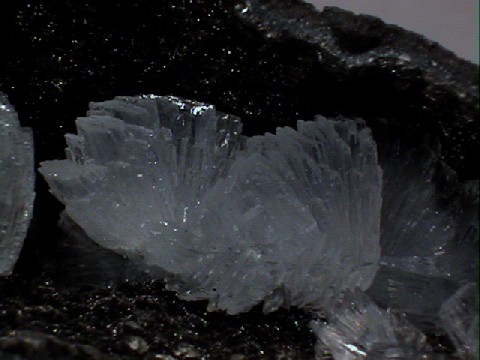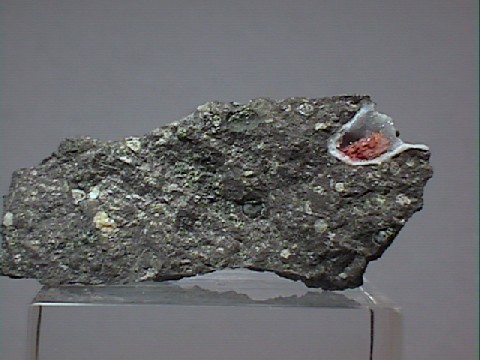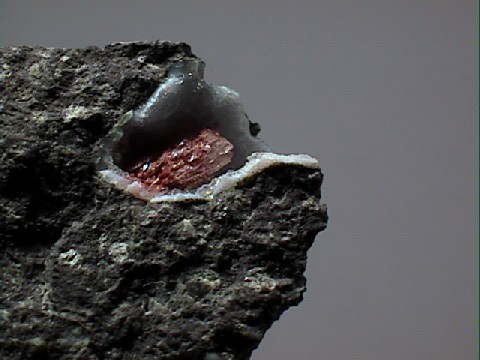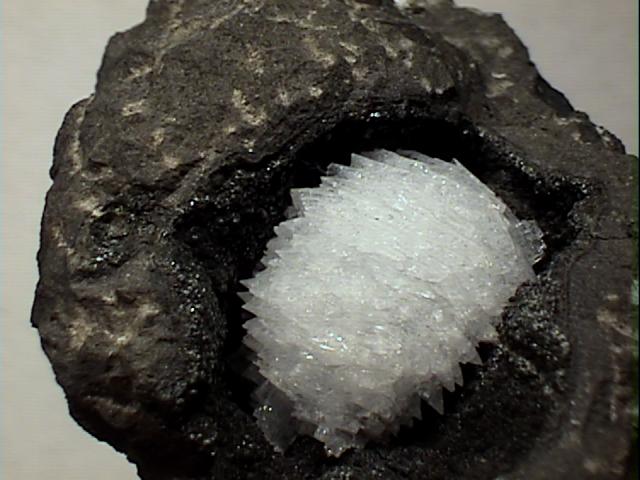 THE
MINERAL EPISTILBITE
THE
MINERAL EPISTILBITE
- Chemistry: CaAl2Si6O16 - 5H2O, Hydrated Calcium Aluminum Silicate
- Class: Silicates
- Subclass: Tectosilicates
- Group: Zeolites
- Uses: Mineral specimen and chemical filter.
Specimens
Epistilbite is one of the rarer zeolites, a popular group of minerals to collect. Epistilbite commonly forms in the petrified bubbles (called vesicles) of volcanic rocks that have had a slight amount of exposure to metamorphism. It also forms in some pegmatites. Epistilbite's name means over stilbite perhaps in allusion to crystals of epistilbite that form over crystals of stilbite, a closely related zeolite. Epistilbite has similar crystal habits to stilbite although it rarely forms the large, impressive clusters that has made stilbite so famous.
Epistilbite's structure has a typical zeolite openness that allows large ions and molecules to reside and actually move around inside the overall framework. The structure actually contains open channels that allow water and large ions to travel into and out of the crystal structure. The size of these channels controls the size of the molecules or ions and therefore a zeolite like epistilbite can act as a chemical sieve, allowing some ions to pass through while blocking others.
PHYSICAL CHARACTERISTICS:
- Color is colorless, white, pink and reddish.
- Luster is vitreous.
- Transparency: Crystals are transparent to translucent.
- Crystal System is monoclinic; 2/m
- Crystal Habits include tabular to prismatic crystals, sometimes fibrous and radiating. Twinning is common with the interpenetration twin forming a cruciform (cross) shaped crystal.
- Cleavage is perfect in one direction.
- Fracture is uneven.
- Hardness is 4.
- Specific Gravity is approximately 2.2 - 2.3 (very light)
- Streak is white.
- Associated Minerals are quartz,
beryl,
calcite,
yugawaralite , heulandite, stilbite and other zeolites. - Notable Occurrences include Poona, India; Berufjord, Iceland; Osilo, Sardinia, Italy; Isle of Skye, Scotland and in pegamtites at Bedford, New York and in the basalts of Hawaii, USA
- Best Field Indicators are crystal habit, low density, locality and associations.









